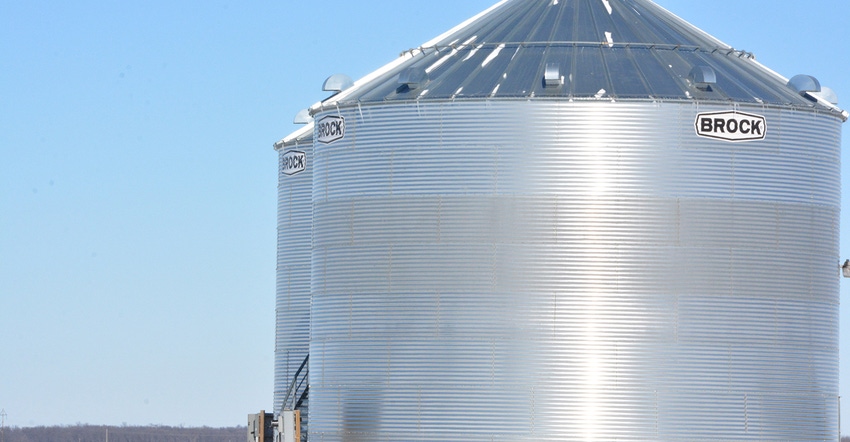March 29, 2019

Corn needs to be dried to 13% to 14% moisture for summer storage to prevent spoilage, says Ken Hellevang, North Dakota State University Extension specialist.
If corn is above 21%, you’ll have to use a high-temperature dryer. Natural air drying may take too long. The corn may start deteriorating before it gets dry. The allowable storage time of 22% moisture corn is about 190 days at 30 degrees F, but only 30 days at 50 degrees, he says.
Soybeans should be dried to 11%, wheat to 13%, barley to 12% and oil sunflowers to 8% moisture.
Recommended airflow rates and Hellevang’s tips for running the fans include:
• Corn. For natural air-drying, assure that the fan's airflow rate is at least 1 cubic foot per minute per bushel (cfm/bu) and the initial corn moisture does not exceed 21%. Start the fan when the outdoor temperature averages about 40 degrees.
• Soybeans. Use an airflow rate of at least 1 cfm/bu to natural air-dry up to 15% to 16% moisture soybeans. Start the fan when the outdoor temperature averages about 40 degrees. Follow the manufacturer's recommendation for high-temperature drying soybeans. Monitor the soybean quality and reduce the drying temperature if excessive cracking or splitting occurs. Reduce the fire hazard by keeping the soybeans flowing in the dryer. Pods and trash can become lodged and combustible. Frequently clean the dryer to remove anything that may impede flow. Constantly monitor the dryer when drying soybeans.
• Sunflowers. Natural air-drying for oil sunflowers requires an airflow rate of 0.75 cfm/bu for up to 15% moisture. The drying should start when outdoor temperatures average about 40 degrees.
• Wheat. Use an airflow rate of at least 0.75 cfm/bu to natural air-dry up to 17% moisture wheat. Start drying when the outside air temperature averages about 50 degrees.
• Barley. Use an airflow rate of at least 0.75 cfm/bu to natural air-dry up to 16% moisture barley.
"Remember that some of the allowable storage life was used during the fall before the grain was cooled to near or below freezing, so there is less time for spring drying before deterioration occurs," Hellevang says. "This is particularly important for malting barley, where germination can be lost, so using a higher airflow rate to reduce the drying time is encouraged."
Bag caution
If you have grain in bags, molds will grow and spoilage will occur quickly as temperatures rise in the spring unless the grain is dry.
Grain bags that run east-west will have solar heating on the south side, which creates a temperature variation across the bag that will move moisture to the north side of the bag, Hellevang says.
Source: NDSU, which is solely responsible for the information provided and is wholly owned by the source. Informa Business Media and all its subsidiaries are not responsible for any of the content contained in this information asset.
You May Also Like




